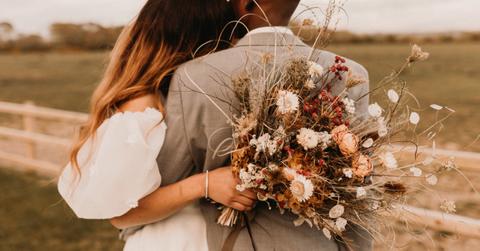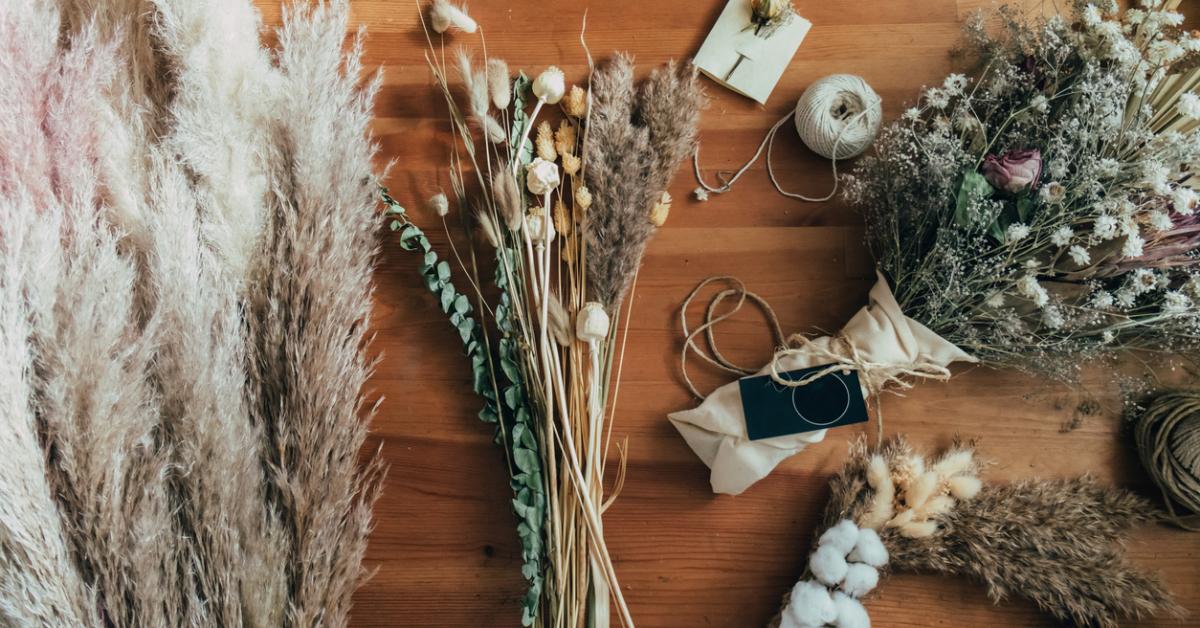Looking to Buy Fresh Flowers? Your Guide to Eco-Friendly Floriculture and Alternatives
Published Dec. 15 2023, 4:28 p.m. ET

The Gist:
- The floriculture industry is infamous for chemical pesticides, outrageous water consumption, and high carbon emissions.
- Refrigeration and long-haul transport of flowers all over the world contribute to greenhouse gas emissions.
- Dried flowers, potted plants, and eco-faux flowers are sustainable alternatives for wedding floral arrangements.
- Certain American flower delivery services prioritize working with local florists, cutting down on carbon emissions created via shipping.
Purchasing a vibrant bouquet of freshly cut flowers can bring liveliness to any space or moment, which is deeply ironic. Aside from your sweet-smelling bouquet, chaplet, or boutonnière slowly dying right in front of your eyes (florists typically say a bouquet should last seven to 10 days), the floriculture industry has its thorns stuck in the environment.
That's right, the cut flowers aren't so sustainable, contributing to massive water consumption, outlandish carbon emissions, and harmful chemical pesticide use (according to Forward Lab, it's "estimated that one-fifth of the chemicals used in the floriculture industry in [less economically developed countries] is banned or untested in the U.S.").

Forward Lab wrote that one rose flower has an estimated water footprint of 1.8 to 3.4 gallons. And according to TED, the refrigeration and long-haul transport of cut flowers leads to significant greenhouse gas emissions. Citing the International Council on Clean Transportation, TED's Ros Davidson wrote that "Valentine’s Day flowers grown in Colombia and flown to U.S. airports produced some 360,000 metric tons of [carbon dioxide]" in 2018.
Plus, roses grown in countries like the Netherlands may need artificial light, heat, and cooling — aka more energy — throughout the growing period, as per Scientific American.
Still, the billion-dollar floriculture industry isn't going anywhere. So, here's your guide to sustainable floral alternatives and buying eco-friendly flowers.

Here are some eco-friendly alternatives to traditional wedding flowers for your big day.
Locally-grown dried flowers:
Consider finding a company that grows flowers locally and turns them into dried flower bouquets and centerpieces. For instance, there's Shopshire Petals, a company insists that dried flowers are a long-lasting, water- and energy-saving alternative to cut flowers.
"When harvested, fresh cut blooms require continuous refrigeration and water, while our dried flowers are simply cut by hand and hung on stillages on the farm," the company wrote.
They can potentially last years and are typically a cheaper alternative.
Potted centerpieces:
Not only can potted centerpieces create a woodland or desert vibe depending on the plants chosen (succulents are popular), but they stay alive well beyond the moment you say "I do."
Sarah Johns of Something Styled Events + Floral Design told Martha Stewart that potted centerpieces double as charming favors.
"Guests were able to take the centerpieces home and replant those herbs and plants," she shared, recalling one particularly sustainable client experience.
We recommend purchasing potted plants from shops that support local growers, propagation, and water recycling systems. Additionally, avoid purchasing novelty plants with short lifespans, like poinsettias and sprayed cacti, as per Gardenista.
Upcycled faux flowers:
Bloomist's EcoFaux botanicals "[transform] trash that’s designated for landfills into beautiful objects." Composed of upcycled fabrics made from single-use plastic and PET bottles, and biodegradable papier-mâché, these faux flowers are magical.
However, Bloomist admits some virgin plastic is used "for the parts that attach the leaves to the stems and the foliage backing that supports the flower and flower centers" as "100 percent biomass feels hard." The brand is working on changing this.
Recycled paper or fabric "flowers" offer another unique alternative. Take it one step further by renting faux flowers!
Alternatively, check out these more sustainable flower delivery options.
Teleflora:
Insisting that "you won't receive pre-packaged flowers in nondescript boxes dropped on your doorstep," Teleflora is dedicated to providing made-by-hand creations that are delivered by hand — no shipping! All orders are sent to local florists in your area, and together with the small businesses it supports, Teleflora ensures "they have what they need to grow their business profitably and sustainably."
Slow Flowers:
American flower farming advocate Debra Prinzing started the Slow Flowers online directory to help everyday people find local, sustainably grown flowers from "florists who guarantee the origin of the flowers they use."
"It isn't easy to find American-grown flowers in the sea of unlabeled imported ones," she said. "It's all about making a conscious choice."